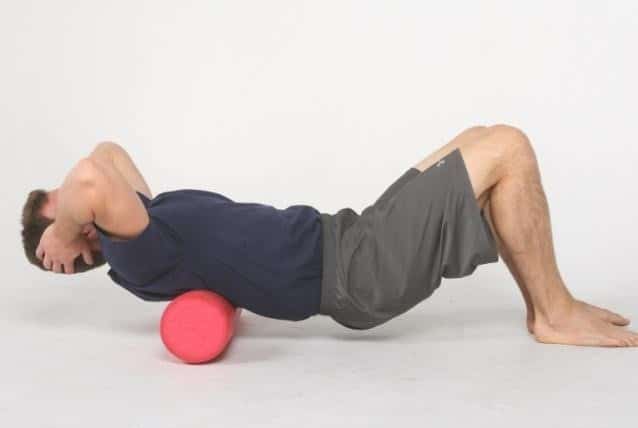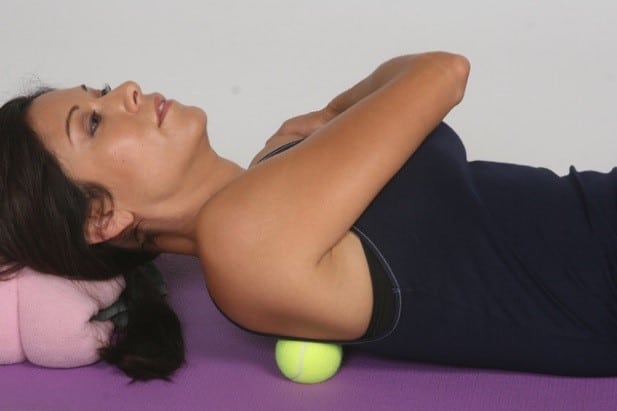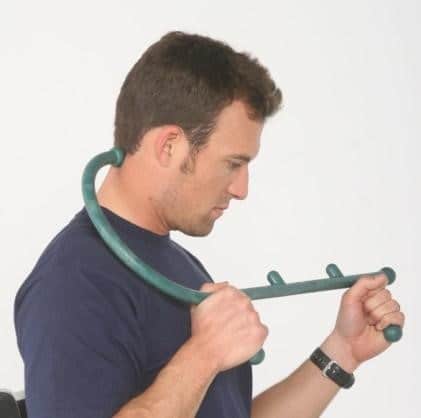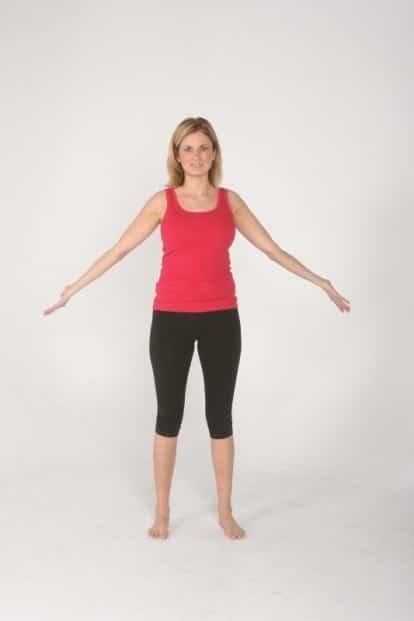Exercises for Shoulder Pain

What can you do to help clients avoid shoulder damage so they can exercise regularly, enjoy daily activities, and reach their health and fitness potential? Start by learning about common shoulder problems and reviewing a range of exercises to keep the shoulders strong and ease the sting of shoulder pain.
Common Shoulder Injuries
Though diagnosing shoulder injuries is outside your scope of practice as a fitness professional, you still need to know the terminology of commonly diagnosed shoulder conditions/injuries so you can communicate effectively with clients. These are the four most common types:
Knowing the anatomical elements of the shoulders (see the sidebar “Shoulder Anatomy”) will help you pinpoint clients’ problems, identify musculoskeletal imbalances exacerbating the conditions and design appropriate corrective exercise strategies.
Exercises to Correct Shoulder Imbalances
Shoulder pain usually results from musculoskeletal imbalances in the core structures of the shoulder joints (see the sidebar “Shoulder Imbalances That Cause Pain and Injuries”). Thus, exercise programs to prevent shoulder damage or ease pain must address these imbalances.
All shoulder-joint exercise programs should begin with self-myofascial release, progress to stretching and then embrace strengthening exercises (Price & Bratcher 2010). If your client complains of shoulder pain, assess likely causes (such as thoracic kyphosis, protracted shoulder blades, internally rotated arms and forward head), and find an appropriate exercise from the options that follow.
Foam Roller on Thoracic Spine
This exercise rejuvenates the muscles of the thoracic spine and shoulders by releasing excessive tension, which helps improve excessive thoracic kyphosis and protracted shoulder blades.
- Lie on your back over a foam roller with your hands behind your head and chin tucked in (the roller should be perpendicular to your torso).
- Bend your knees, tuck your hips to prevent the lower back from arching, and lift your pelvis off the floor.
- Roll up and down along the thoracic spine, massaging sore or tender spots for 30 seconds to 2 minutes.
Roll up and down the thoracic spine, massaging sore spots.
Tennis Ball Around Shoulder Blade
Massaging the muscles that retract and depress the shoulder blades addresses protracted and elevated shoulder blades and prepares the tissues for subsequent strengthening exercises.
- Lie down with your knees bent, head resting on a pillow.
- With a tennis ball beside one shoulder blade (between the blade and the spine), pull the arm on that side across your chest.
- Find a sore spot and hold for 10-15 seconds to release tension, pausing on all sore spots around the shoulder blade.
Use the tennis ball to release tension and ease sore spots.
Thera Cane® on Back of Neck
This exercise rejuvenates the muscles on the back of the neck to alleviate problems from elevated shoulder blades, a forward head and excessive cervical lordosis.
- Sitting in a chair, place the hook end of the Thera Cane on the back of your neck (on the neck extensors and upper fibers of the trapezius muscle).
- Apply pressure by pulling the handle of the Thera Cane down and outward; pause on any sore spots you find to release tension.
Thera Cane helps release tension at the back of the neck.
Tennis Ball on Front of Shoulder and Chest
This exercise releases tension in the muscles at the front of the shoulder and chest, enabling the arms to externally rotate and the scapulae to retract. It also prepares this area for subsequent stretching and strengthening exercises.
- Lie face down with arm outstretched straight, palm down.
- Place a tennis ball on the front of the shoulder/chest and scoot your body to move the ball to any sore spots.
- Maintain pressure for 30 seconds to relieve tension; move to another sore spot.
A tennis ball on sore spots prepares the shoulder for stretching and strength training.
“Why?” Stretch
This exercise stretches the chest and fronts of the shoulders while strengthening the rhomboids, lower traps and external rotators of the shoulders/arms to realign the entire shoulder girdle.
- Stand upright with pelvis tilted posteriorly, arms externally rotated to sides.
- Contract the rhomboids and external rotators to help pull the arms and shoulders back while activating the lower traps to assist in pulling the shoulders down.
- Hold the contracted position for about 30 seconds; release and repeat.
Rotate the arms externally to your side to do the “Why?” stretch.
For more information about anatomy and shoulder imbalances that cause pain, please see “Shoulder Pain and Injury Prevention” in the online IDEA Library or in the October 2017 print edition of IDEA Fitness Journal. If you cannot access the full article and would like to, please contact the IDEA Inspired Service Team at 800-999-4332, ext. 7.
Justin Price, MA
Justin Price, MA, is creator of the BioMechanics Method® Corrective Exercise Specialist (TBMM-CES) program, the fitness industry’s highest-rated CES credential, with trained professionals in 80 countries. He is also the author of several books, including The BioMechanics Method for Corrective Exercise academic textbook, and he was awarded the 2006 IDEA Personal Trainer of the Year. He has served as a subject matter expert for numerous brands and media organizations including ACE, TRX® and BOSU®; the BBC, Discovery Health and MSNBC; Arthritis Today, Men’s Health, Newsweek, Time, WebMD and Tennis; and Los Angeles Times, The New York Times and Wall Street Journal. Learn more about The BioMechanics Method®









